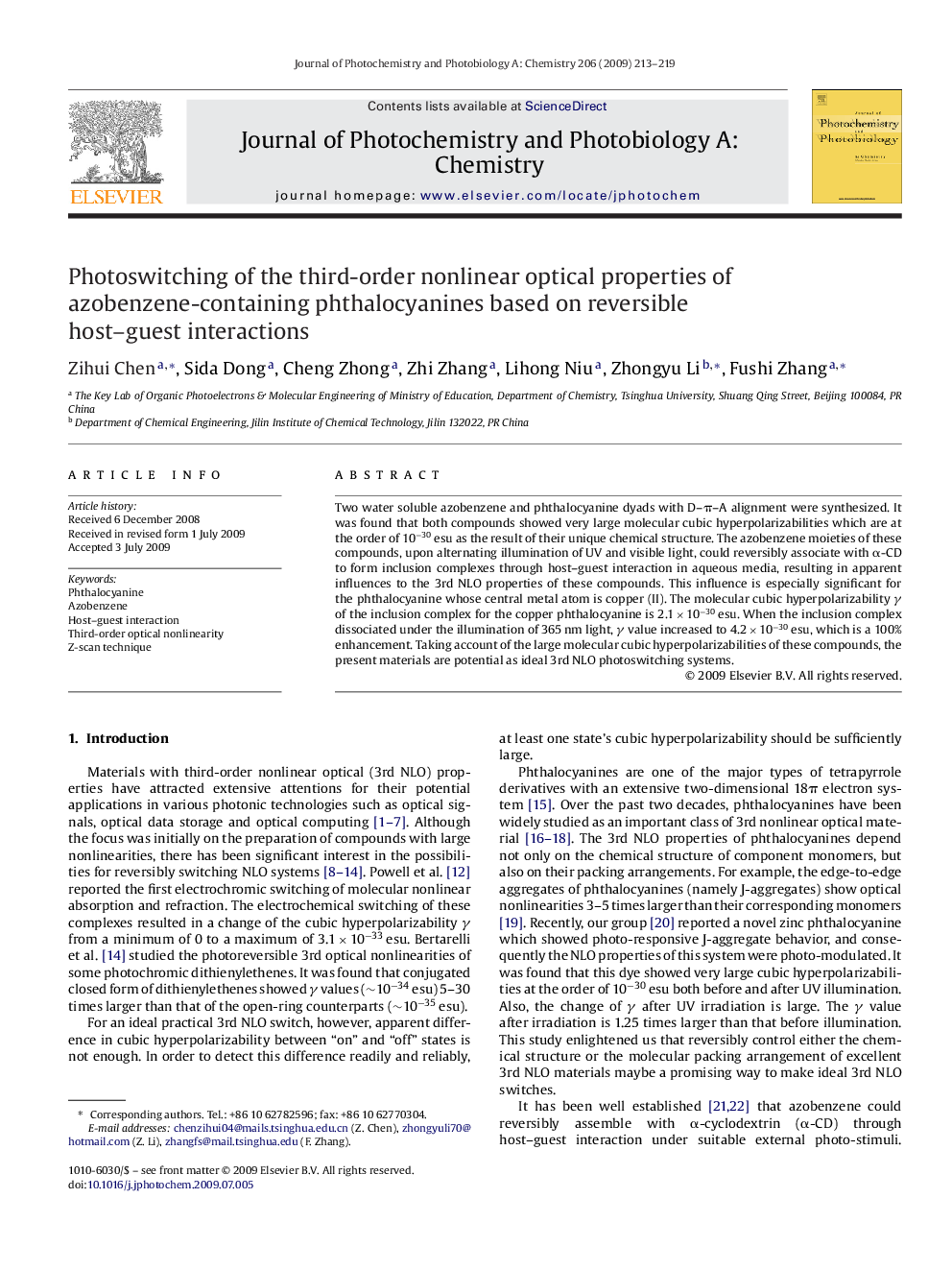| Article ID | Journal | Published Year | Pages | File Type |
|---|---|---|---|---|
| 6493156 | Journal of Photochemistry and Photobiology A: Chemistry | 2009 | 7 Pages |
Abstract
Two water soluble azobenzene and phthalocyanine dyads with D-Ï-A alignment were synthesized. It was found that both compounds showed very large molecular cubic hyperpolarizabilities which are at the order of 10â30 esu as the result of their unique chemical structure. The azobenzene moieties of these compounds, upon alternating illumination of UV and visible light, could reversibly associate with α-CD to form inclusion complexes through host-guest interaction in aqueous media, resulting in apparent influences to the 3rd NLO properties of these compounds. This influence is especially significant for the phthalocyanine whose central metal atom is copper (II). The molecular cubic hyperpolarizability γ of the inclusion complex for the copper phthalocyanine is 2.1 Ã 10â30 esu. When the inclusion complex dissociated under the illumination of 365 nm light, γ value increased to 4.2 Ã 10â30 esu, which is a 100% enhancement. Taking account of the large molecular cubic hyperpolarizabilities of these compounds, the present materials are potential as ideal 3rd NLO photoswitching systems.
Keywords
Related Topics
Physical Sciences and Engineering
Chemical Engineering
Bioengineering
Authors
Zihui Chen, Sida Dong, Cheng Zhong, Zhi Zhang, Lihong Niu, Zhongyu Li, Fushi Zhang,
